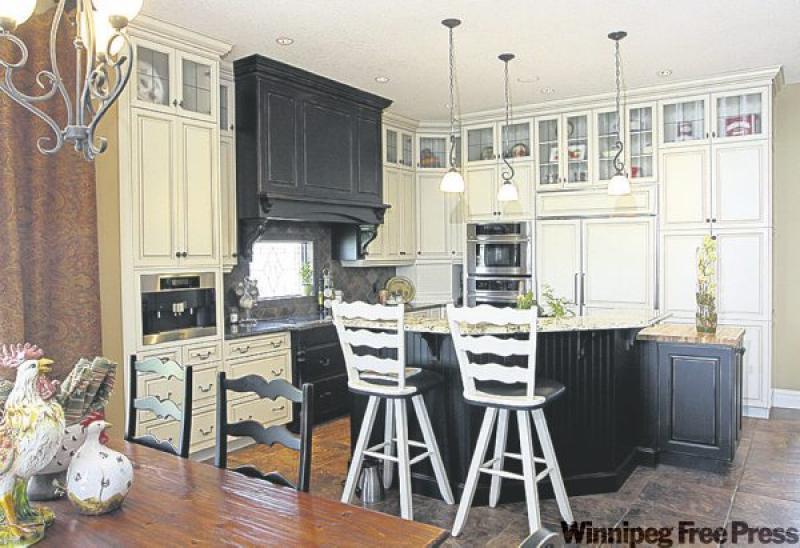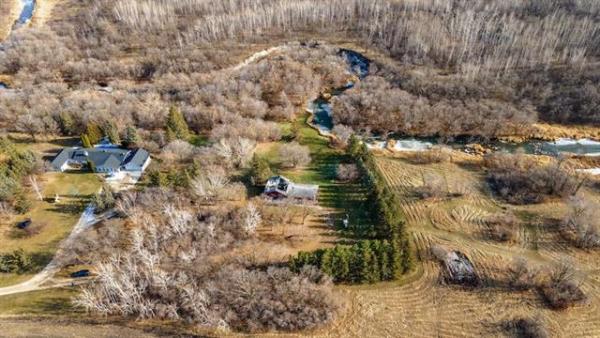Over the years, the design of the hearth evolved. It moved to the end of the hall, inglenooks were built around it, and it even migrated to individual rooms. But still, the flames and coals gave heat to all nearby.
North of Calgary, a new home on the prairie has used the concept of the hearth to inform its entire interior, particularly the L-shaped main floor space where kitchen, dining and living sectors create the home's core.
"The hearth truly constitutes the heart of the home," says interior designer Blinda Bilou, who worked with the homeowner and the builder, McKee Homes, to achieve an integrated vision for the space. "Warmth, sustenance and companionship are all found enveloped in its arms."
But it's not just the hearth that infuses the home with warmth. From the furniture-styled kitchen cabinetry to the oversized terracotta tiles that flow through the space, a European sense of country style (more luxe and less medium oak than traditional North American country) balances new construction and old sensibilities.
"Everything that kept appealing to me was the French Provincial and the warmer tones," explains the homeowner, Jeanette, who found inspiration in magazines and show homes. "I knew how I wanted the space to be... I like having things around me and not having it so open. I need walls and defined space."
Bilou adds that the result is an "earth" rather than "air" look. "Everything that we choose for our homes is very deep-seated, very psychologically rooted," she says. "Sometimes, we don't even know where it comes from."
Like the hearth.
"The whole concept goes back millennia -- it has such an importance in our lives, but we don't always know why."
Bilou certainly does, however, having ensured that the design reflects the dreams and the personalities of the family that now lives within it. An oversized ledgestone fireplace creates the hearth as a gathering place in the living room, where the walls are warmed in a burnt umber shade. At the same time, imposing millwork over the kitchen cooktop reinforces the centuries-old importance of the cooking hearth.
Still in the kitchen, maple wall cabinets have been antiqued in a cream glazed finish, and set off by dark granite countertops. For contrast, the island's alder has been rubbed to simulate the patina of age -- and topped with a light granite.
The cabinetry hides pull-out drawers, a computer linked with the kids' computer downstairs for easy monitoring of Internet use, and a dual-door Sub-Zero fridge. It also frames the built-in Miele coffeemaker and the furniture-like hood over the ceramic stovetop.
"If you went to a European home, you'd find furniture that was passed down from generation to generation -- including in the kitchen," says Bilou. "You'd have a number of furniture pieces that were just thrown in, that don't match. This has little hints of that in the brackets and furniture finish details, and in the hardware, which is wrought iron as opposed to something that's finely milled."
The textured glass doors that top the cabinets are echoed in the custom-made armoire in the living room, unifying the space in the same way that the cream sheepskin rug on the living room floor picks up the light-hued cabinetry from the kitchen.
The original house plan showed the entire living area as open concept. Jeanette, however, had a wall built that shields the living room from the home's entry, separating out the space without fully enclosing it.
"It feels very warm and comfortable, and it feels like the right amount of space, because the ceilings are high and the fireplace is so big," notes Jeanette.
Bilou agrees, explaining that it's essential for people to be comfortable in their space, whether their preference is light and airy or cosy and den-like.
"The philosophy of design is the philosophy of beauty and integrity melded to form a timeless piece of functional art," says Bilou.
-- Canwest News Service




